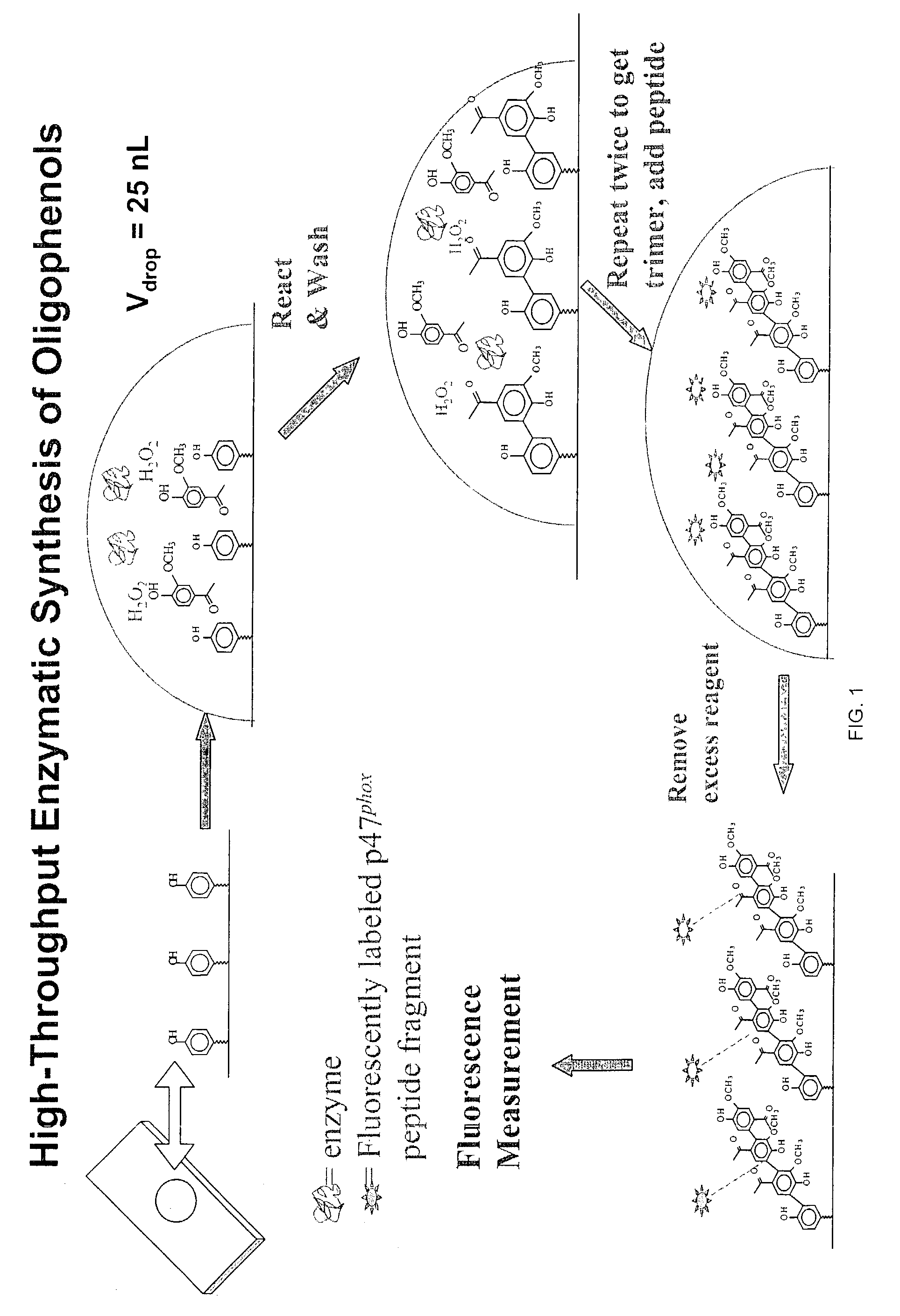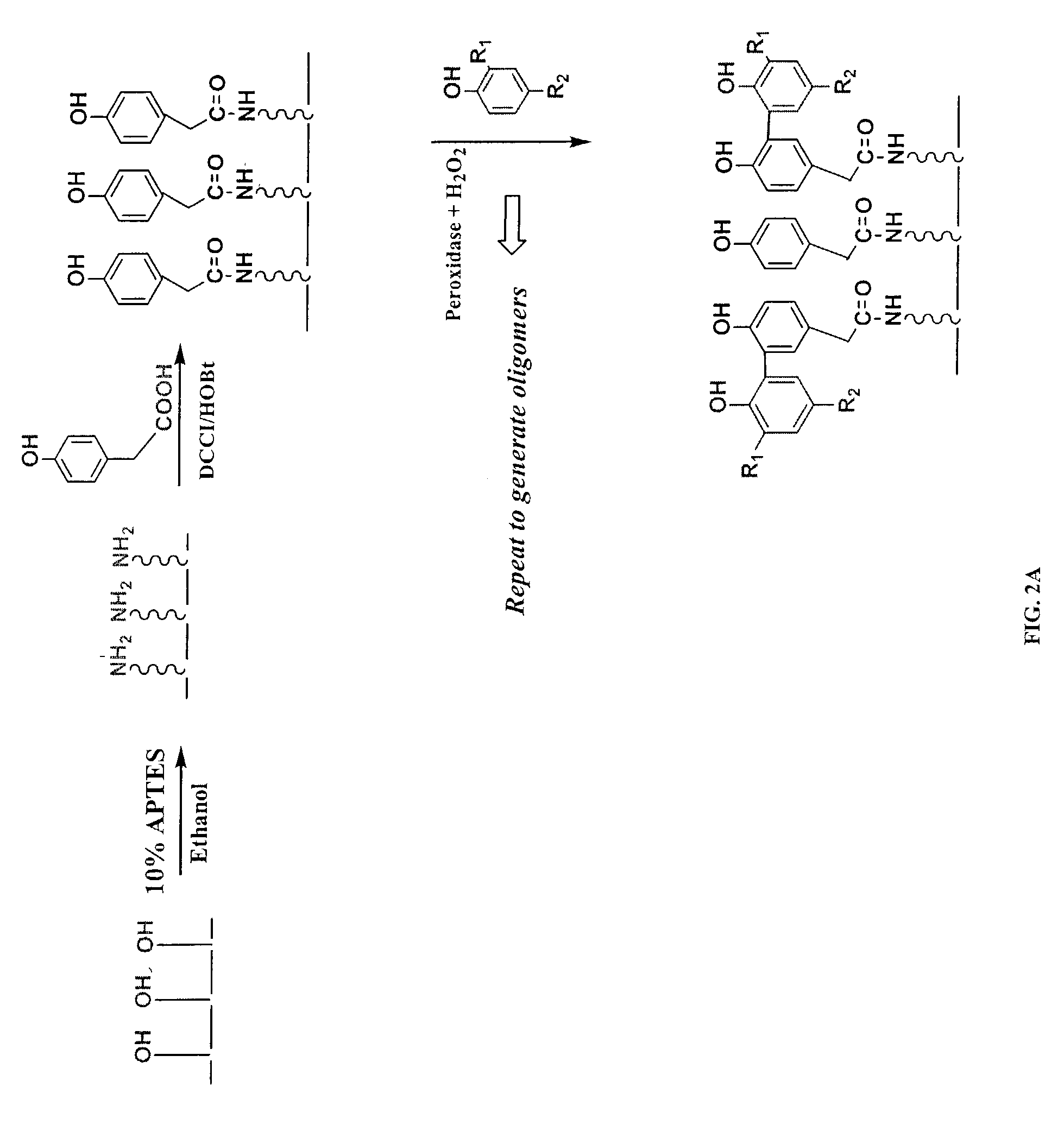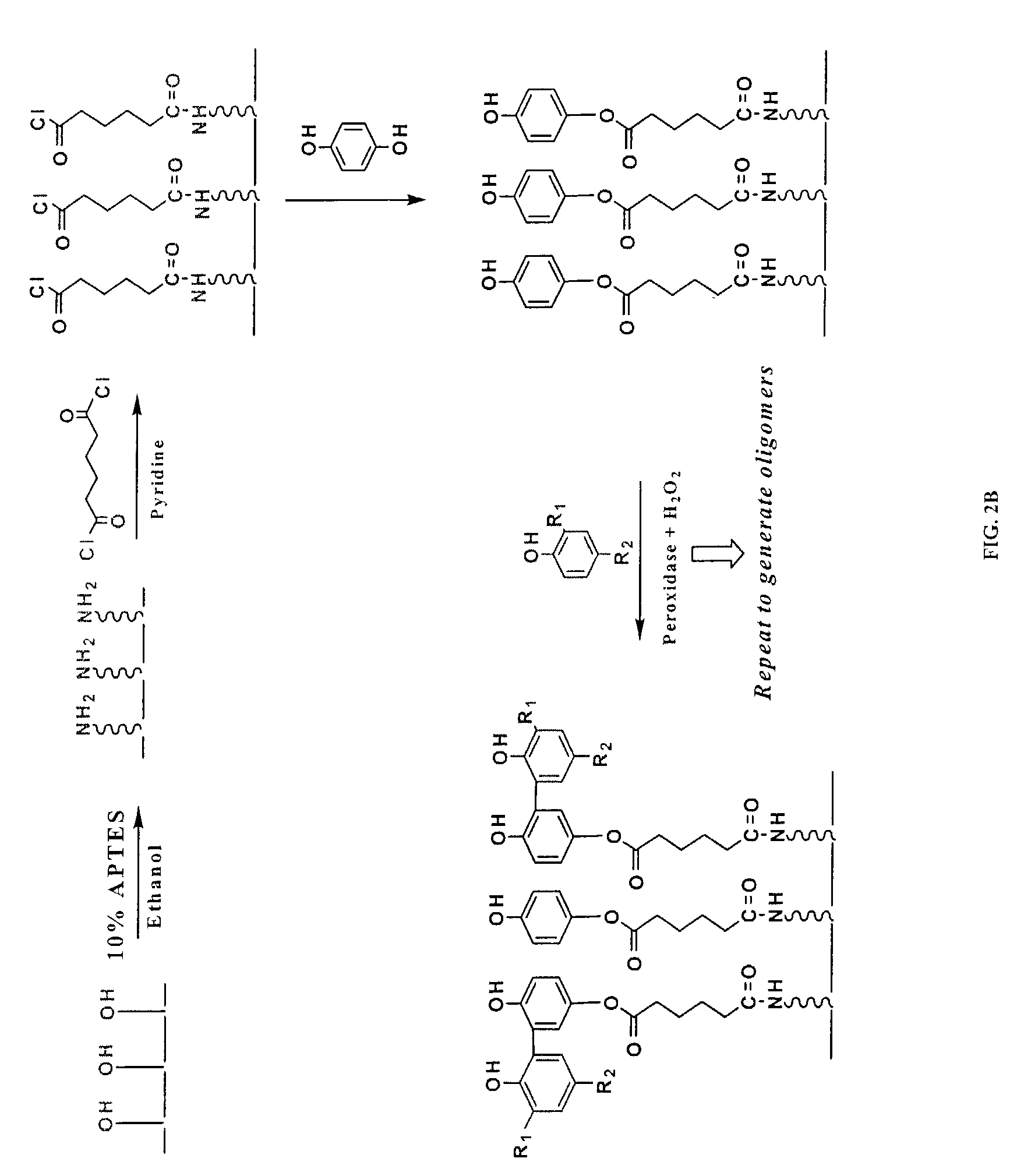Solid-phase array-based biocatalytic transformations
a biocatalytic transformation and solid-phase array technology, applied in the field of solid-phase array-based biocatalytic transformations, can solve the problems of limiting factors, difficult to prepare traditional synthetic chemistry, and the rate of molecule submission to an assay becomes debilitating, and achieves the effect of convenient manipulation
- Summary
- Abstract
- Description
- Claims
- Application Information
AI Technical Summary
Benefits of technology
Problems solved by technology
Method used
Image
Examples
example 1
Solid Phase Synthesis of Oligophenols
[0088]The process of growing oligophenols is achieved through the following steps:
[0089]1. Acid Wash
[0090]Standard glass slides (75 mm×25 mm) are acid washed first in a 1:1 Methanol:HCl solution and then in concentrated H2SO4 to expose the silanol groups. Each of these steps is 2–6 h long, and is followed by a wash in deionized water and drying under nitrogen.
[0091]2. APTES Treatment and the Deposition of Seed Phenol Monomer
[0092]Referring to FIGS. 2A and 2B, the functional groups available on the solid support, exemplified by the hydroxyl moieties, are converted into desirable moieties, exemplified by amines, by 3-aminopropyl-triethoxysilane (APTES). Optionally, the solid support is further derivatized by reacting amino groups with a bifunctional linker molecule, exemplified by 1,6-hexanedioyl chloride (FIG. 2B). Next, the seed monomer, exemplified by hydroquinone, is attached to the functionalized solid support via a covalent ester bond. The sy...
example 2
Quantification of Amino Group Density
[0103]Reaction on slides was followed by monitoring the number of amino groups on a slide. Slides were immersed in 15 ml 1 mM sulfo-SDTB in 50 mM sodium bicarbonate and shaken vigorously for 30 min, after which they were removed washed with DI water and air-dried. Upon the addition of 5 ml of perchloric acid, the dimethoxytrityl cation is released, which absorbs at 498 nm. An extinction coefficient of 70,000 M−1cm−1 is used to quantify the amino group density on the slides.
[0104]Referring to FIGS. 3A, 3B, and 3C. As depicted in FIG. 3B, the solid support, exemplified by glass surface, is functionalized by APTES, derivatized by the seed monomer (HyPAA) and subjected to enzymatic coupling reaction, wherein the enzyme is the soybean peroxidase and the monomer is the tyramine. Each step of this process is monitored by the method of Gaur and Gupta (1989), illustrated in FIG. 3C. Using the chemical steps shown in FIG. 3C, the amino functionalities are ...
example 3
[0105]1. Synthesis of Oligophenols in Solution
[0106]One gram of monomer (apocynin, vanillin, or 0.5 mg each of apocynin and vanillin) is dissolved in 5 ml DMF and transferred to 490 ml of 100 mM phosphate buffer, pH 7. To this mixture, 5 ml of a 1 mg / ml solution of SBP in buffer is added. The reaction is initiated by the addition of H2O2 in one of two ways: either as a bolus of 100 μl 30% H2O2 solution (=1.7 mM H2O2) or 1.5 ml of 30% H2O2 over 12 h using a syringe pump. The oxidation products precipitate and are removed by centrifugation. The pellet is washed several times in DI water, dried, and stored until further use. Another bolus addition of 100 μl of 30% HO2 is made to the supernatant, and the second reaction products are also removed by centrifugation, washed in DI water, dried, and stored.
[0107]2. Reaction of Oligophenols with Cysteine Containing Peptides
[0108]The p47phox subunit of endothelial NADPH oxidase has cysteine containing peptidic regions. One ...
PUM
| Property | Measurement | Unit |
|---|---|---|
| Structure | aaaaa | aaaaa |
| Interaction | aaaaa | aaaaa |
Abstract
Description
Claims
Application Information
 Login to View More
Login to View More - R&D
- Intellectual Property
- Life Sciences
- Materials
- Tech Scout
- Unparalleled Data Quality
- Higher Quality Content
- 60% Fewer Hallucinations
Browse by: Latest US Patents, China's latest patents, Technical Efficacy Thesaurus, Application Domain, Technology Topic, Popular Technical Reports.
© 2025 PatSnap. All rights reserved.Legal|Privacy policy|Modern Slavery Act Transparency Statement|Sitemap|About US| Contact US: help@patsnap.com



